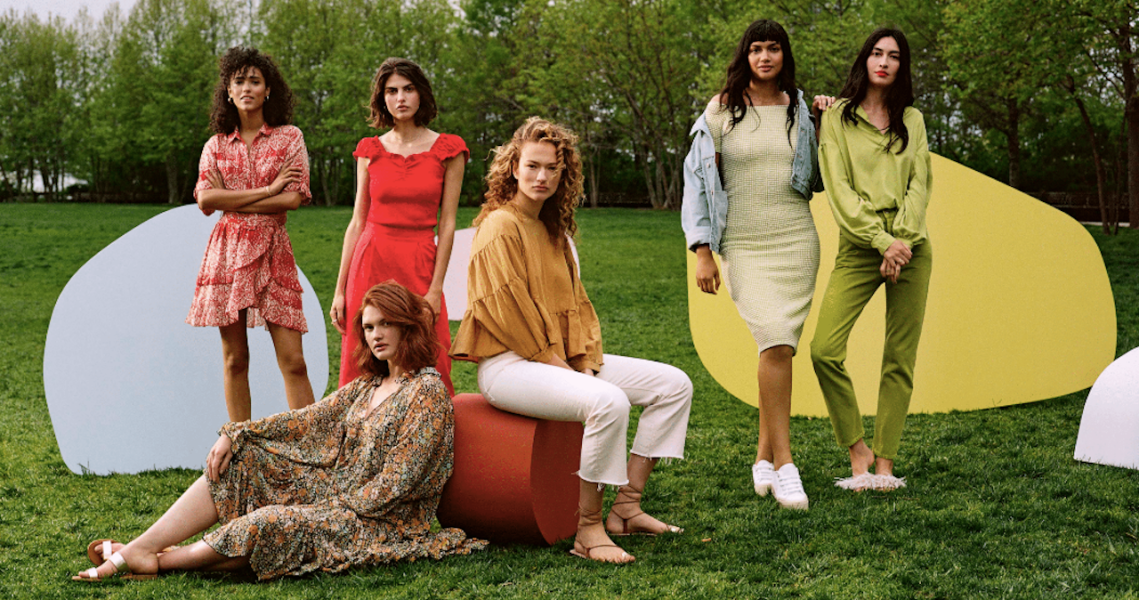In its fourth-quarter earnings call on March 2, executives from URBN, the parent company of Urban Outfitters, quietly let slip that the company is piloting a new premium loyalty program. It will require customers to pay an annual fee to be a part of the upper-tier program that will provide access to additional perks.
For URBN, the hope is that the program, called UP, will encourage purchase frequency and help draw people who are loyal customers of one URBN brand into the larger ecosystem of services the company provides, like its Nuuly rental program. With e-commerce spend at an all-time high, retail brands are working overtime to clench sales over competitors. But an Amazon Prime-like premium tier, like URBN’s UP or the recently launched Walmart+, is expensive to offer and hard to justify to consumers unless it can provide a genuine value.
“UP is designed to drive increased frequency, capture a greater share of wallet, improve retention, provide opportunities for greater cross-brand exposure and selling, and attract new customers,” said Dick Hayne, CEO of URBN. “We believe the ability to access benefits at all Urban brands, for the price of one membership fee, offers a key differentiator for our program.”
UP has two tiers: a $48 annual price point and a $98 annual price point with various degrees of benefits. UO Rewards, the company’s pre-existing free loyalty program, offers a points-based reward system, a 10% discount sign-up bonus and an anniversary discount code every year. The $48 tier of UP gets you free shipping and returns and a blanket 15% discount, while the $98 tier adds on a monthly $10 coupon and a discount on a monthly Nuuly subscription. Those prices and benefits put it roughly on par with Amazon Prime and Walmart+, which are $119 and $98 respectively and include unlimited free shipping.
Other brands outside of giants like Amazon and Walmart have launched their own premium memberships, including Lululemon and Restoration Hardware.
And while those memberships have soared — Amazon Prime membership ballooned from 100 million to 150 million between 2019 and 2020, and Walmart+ already has nearly 9 million members less than six months after its launch — they’re also expensive to maintain. In 2019, Amazon spent more than $37 billion in shipping costs. While the membership fee for these programs is essentially an upfront, often partial payment for future deliveries, free shipping requires investing in the supply chain and establishing partnerships with carriers — and URBN’s revenue fell 7% year-over-year, according to the earnings report.
On top of that, the $98 price tag will be hard to justify for the majority of URBN customers. The company does not disclose average annual spending per customer, but Hayne said AOV has been growing over the last year, particularly at its top sales driver, Anthropologie. But according to Tom Caporaso, CEO of premium loyalty provider Clarus Commerce, programs like this aren’t intended to appeal to all consumers.
Ad position: web_incontent_pos1
“While UO Rewards (the brand’s traditional program) [is free], the premium loyalty program is designed to capture URBN’s top 10-20% of customers that shop across the URBN umbrella,” Caporaso said. “These top shoppers won’t accrue rewards over time, but instead will feel instant gratification for immediate access to free shipping, monthly coupons and other enticing rewards that they are looking for today. Enrollees’ reception to these perks will provide extremely valuable insights to the URBN umbrella, especially since they are the ones most likely to take advantage of new offerings and share their honest feedback.”
Hayne said he wants UP to help bring high-frequency customers of URBN brands into the other services the company provides, beyond just its brands — which calls to mind Amazon Prime. For example, members get a $10 coupon each month for a Nuuly subscription, which normally costs $88 per month.
Hayne said the company is currently exclusively running the program in two cities, Dallas and Atlanta. It will reevaluate the details and longevity of UP at six months and 12 months, before determining whether it will live on.
“The goal here is really to test and learn. [We want] to understand the degree to which customers are intrigued by these offerings, and then to also be able to measure over time how customers respond and if their behavior changes based on becoming a member,” he said. “It’s early days. We just launched it a few weeks ago, but we’re encouraged by the early feedback so far and excited about the program.”




